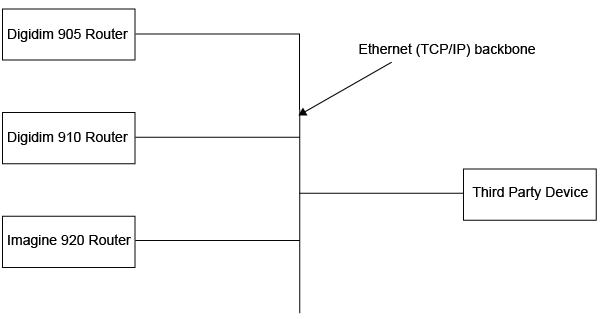
HelvarNet Overview

 |
HelvarNet Overview |
 |
|
Notes:
|
HelvarNet is an Ethernet I/O protocol that allows third-party devices (e.g. AV equipment) to query and control a 905/910/920 router system, as well as perform some basic system configuration, over an Ethernet ( TCP/IP) connection. It is a published standard that provides a set of rules for communicating with a Helvar lighting system.
The third-party device may communicate with one or more routers in the system, provided it knows the IP address of each router, in order to communicate with the lighting system.

The following TCP/IP protocols are supported by HelvarNet:
TCP connection created and accepted by router.
UDP incoming and outgoing.
The interface provides you with a means of interacting with the lighting system. It is up to you to develop and program your third-party device in order to achieve this communication.
If you want to send commands to the router system from the third-party device, then the third-party device must be able to instigate a TCP connection with a Helvar router or send UDP messages to a Helvar router (this is not required for the router system to control the third-party device).
To establish a TCP connection and therefore communicate with the router, the third-party device is required to connect to listener port number 50000.
To send TCP messages from the router to the third-party device, the router connects to a listener port provided in the third-party device. It is recommended that this listener port is in the range from 49152 to 65535. For more information, see Routing Entries and Schedules. For information about how to send UDP messages, see Scene Triggered Ethernet I/O.
When using the UDP protocol, the third-party device is required to send a message to destination port number 50001 in the router.
To send UDP messages from the router to the third-party device, it is recommended that the destination port in the third-party device is in the range from 49152 to 65535. For more information, see Routing Entries and Schedules . For information about how to send UDP messages, see Scene Triggered Ethernet I/O.